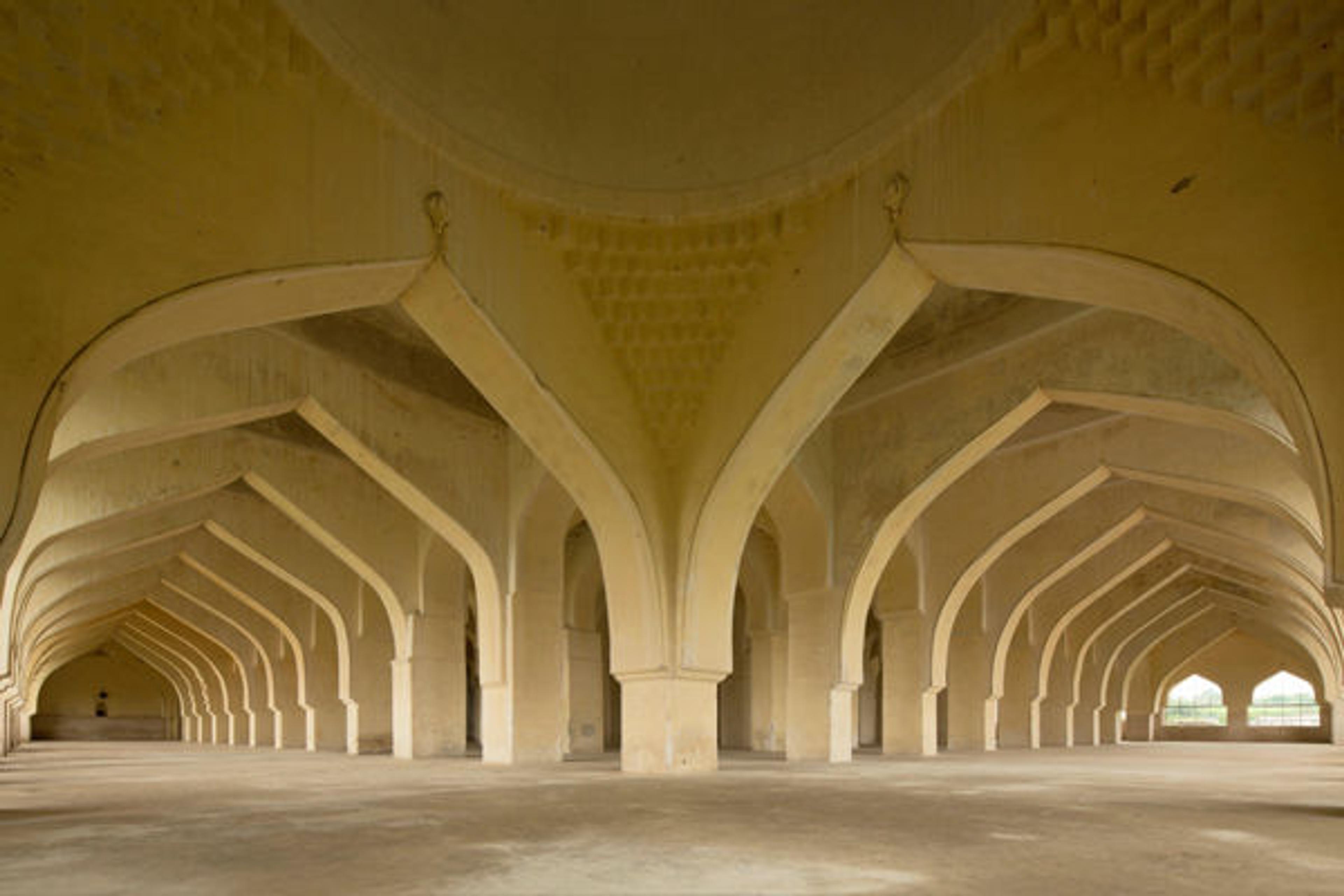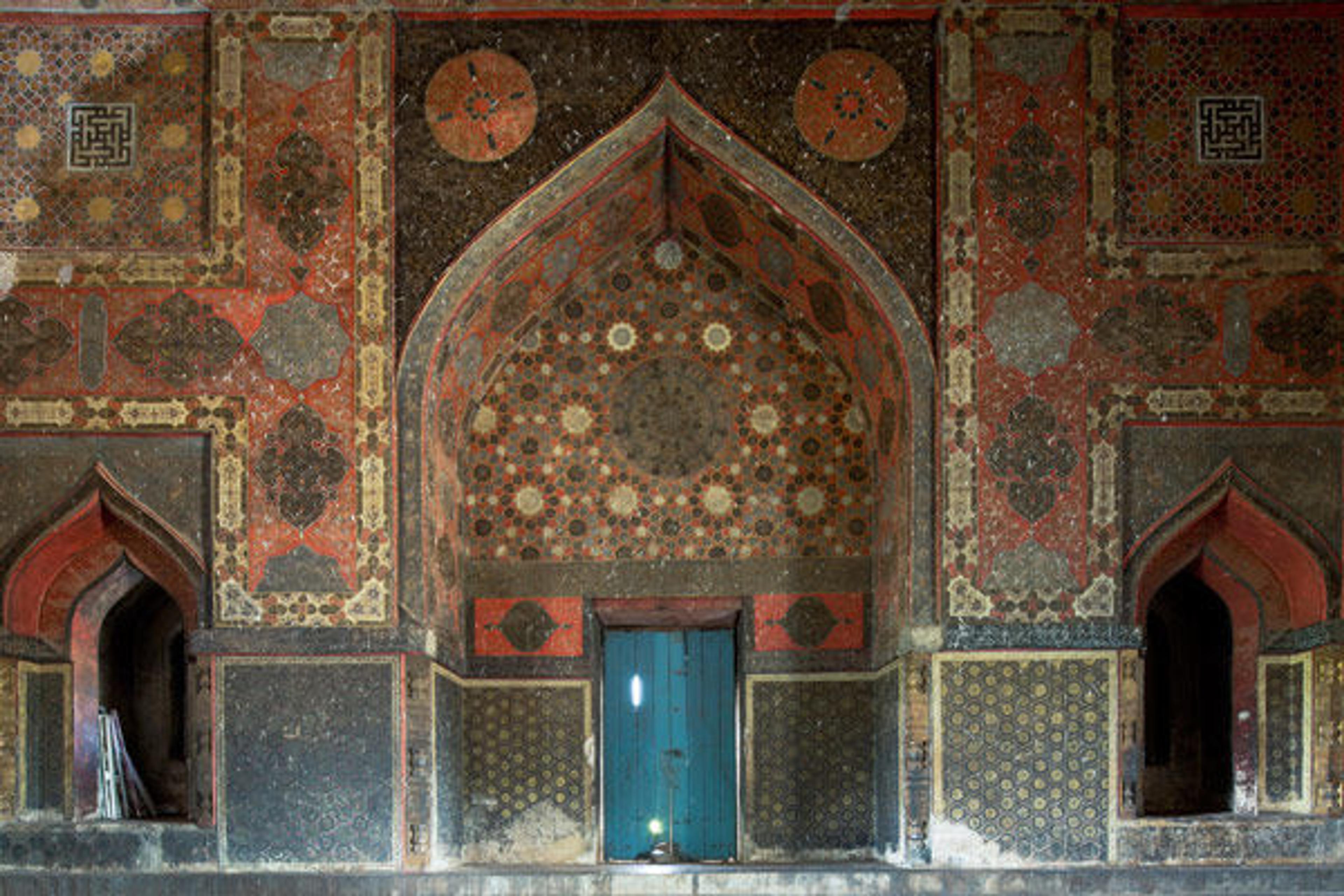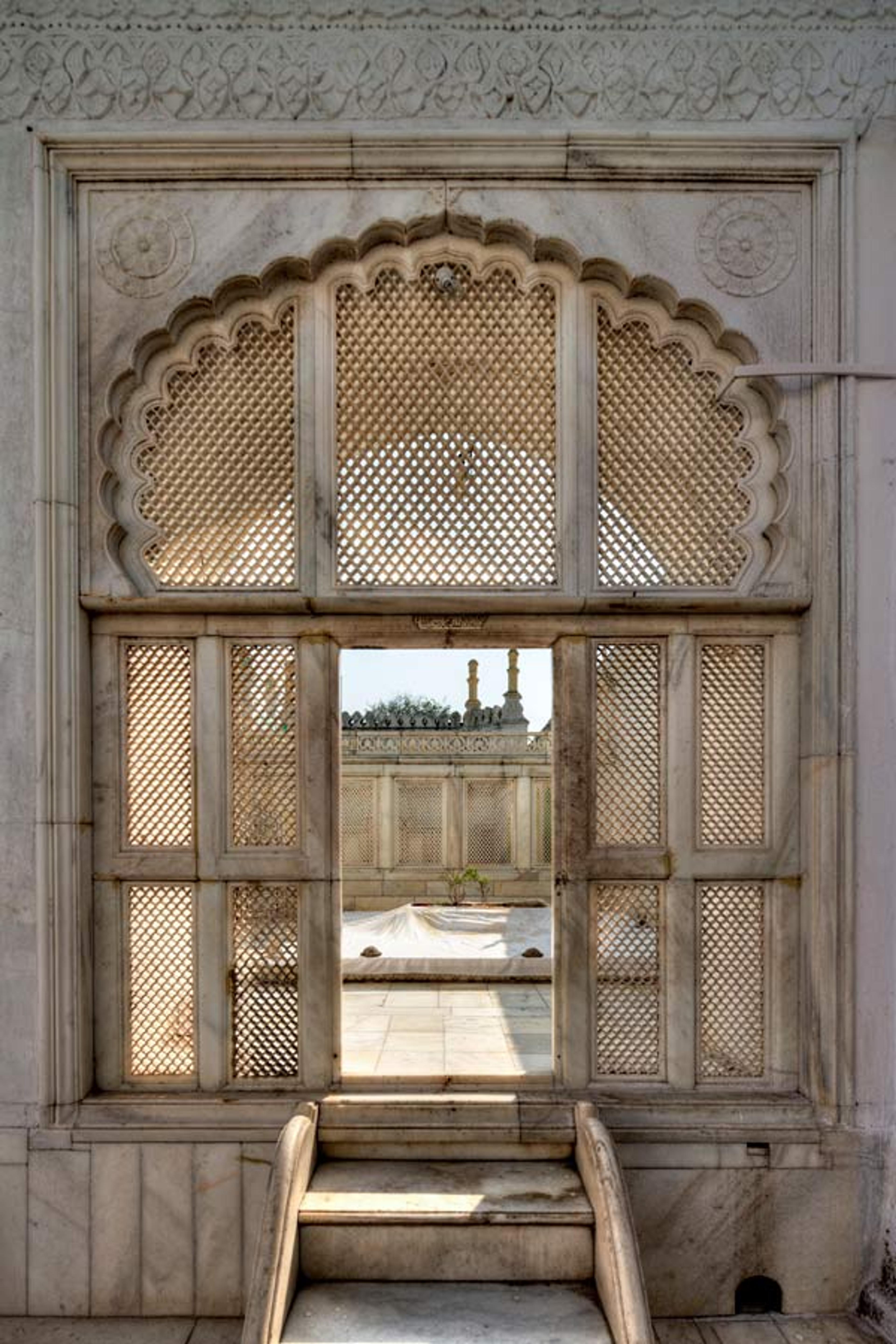Across Place and Time: Exploring Deccan Architecture with George Michell

Outer gallery, Jami Masjid (Congregational Mosque), Gulbarga, late 14th–early 15th century. Photography © Antonio Martinelli
«On Friday, May 15, the Department of Islamic Art hosted independent scholar and Deccan Heritage Foundation Cofounder George Michell for a Friday Focus lecture entitled "Courtly Arts of the Deccan, the Architectural Setting: Forts, Palaces, Mosques, and Tombs of the Deccan." Presented in conjunction with the exhibition Sultans of Deccan India, 1500–1700: Opulence and Fantasy, this dynamic lecture stretched across place and time, with Michell highlighting architectural connections between the Deccan plateau, Central Asia, and the Middle East.»
Michell's lecture began with the failure of the northern Delhi emperors to maintain a stronghold in the Deccan, which created a power vacuum to be filled by the Bahmanid dynasty, a breakaway group who declared their independence from the northern powers. The first capital of these emperors was a mighty fortress in Gulbarga that boasts a congregational mosque in the center. The mosque could have doubled as an audience hall, and has a light, airy interior.
From there, Michell delved into a discussion of Persian influence in Deccan architecture, pointing out the (now stripped) colorful, tile-lined interior walls of the fort in Bidar. He focused on one remaining fragment on the walls depicting an animal strikingly similar to those found in Iranian tilework of the same time period.

Bidar Fort, 15th century. Photography © Antonio Martinelli
Michell also showed the crowd images from the tomb of Ahmad Shah Wali Bahamani (d. 1436), which is decorated in colorful designs and features motifs that appear in rugs produced in the Middle East. Michell used this connection to stress that the Deccan plateau was not an isolated area, but rather a metropolis and important trade destination.

Painted interior, Tomb of Ahmad Shah Bahmani I, Ashtur, ca. 1436. Photography © Antonio Martinelli
Michell also argued that the Deccan plateau became a place that took Middle Eastern and Central Asian architectural styles and pushed them farther than they could achieve in their own element. He used Ahmednagar's Farah Baksh palace as an example of foreign architecture, calling it an "Iranian palace in the Deccan." Yet despite its Iranian flourishes, nothing identical exists in Iran. Thus, Michell argued that ideas from other regions reached fulfillment in the Deccan, as the sultans of these kingdoms had the confidence and resources to create art that was grander than in its original milieu.

Pavilion at the Farah Bakhsh Bagh (Pleasure-Bestowing Garden), Ahmadnagar, 1583. Photography © Antonio Martinelli
The lecture concluded with the symbolic end of Deccani architecture. When the Mughal prince Aurangzeb conquered the Deccan, the Mughal influence took over Deccan art, as seen in the Bibi ka Maqbara tomb in Aurangabad. Aurangzeb wanted to be associated with the Sufi saint Shaikh Burhan-u'd-din Gharib, and his modest, open-air grave resides in the courtyard of the saint's shrine in Khuldabad—an end to the lavish Deccan tomb tradition of the period.

Tomb of Aurangzeb (d. 1707), Khuldabad. Photography © Antonio Martinelli
Related Links
Sultans of Deccan India, 1500–1700: Opulence and Fantasy, on view April 20–July 16, 2015
Explore more of Antonio Martinelli's photography in "The Deccan through a Photographer's Lens."
See a list of upcoming events related to this exhibition.
Helen Goldenberg
Helen D. Goldenberg is an associate for administration in the Department of Islamic Art.